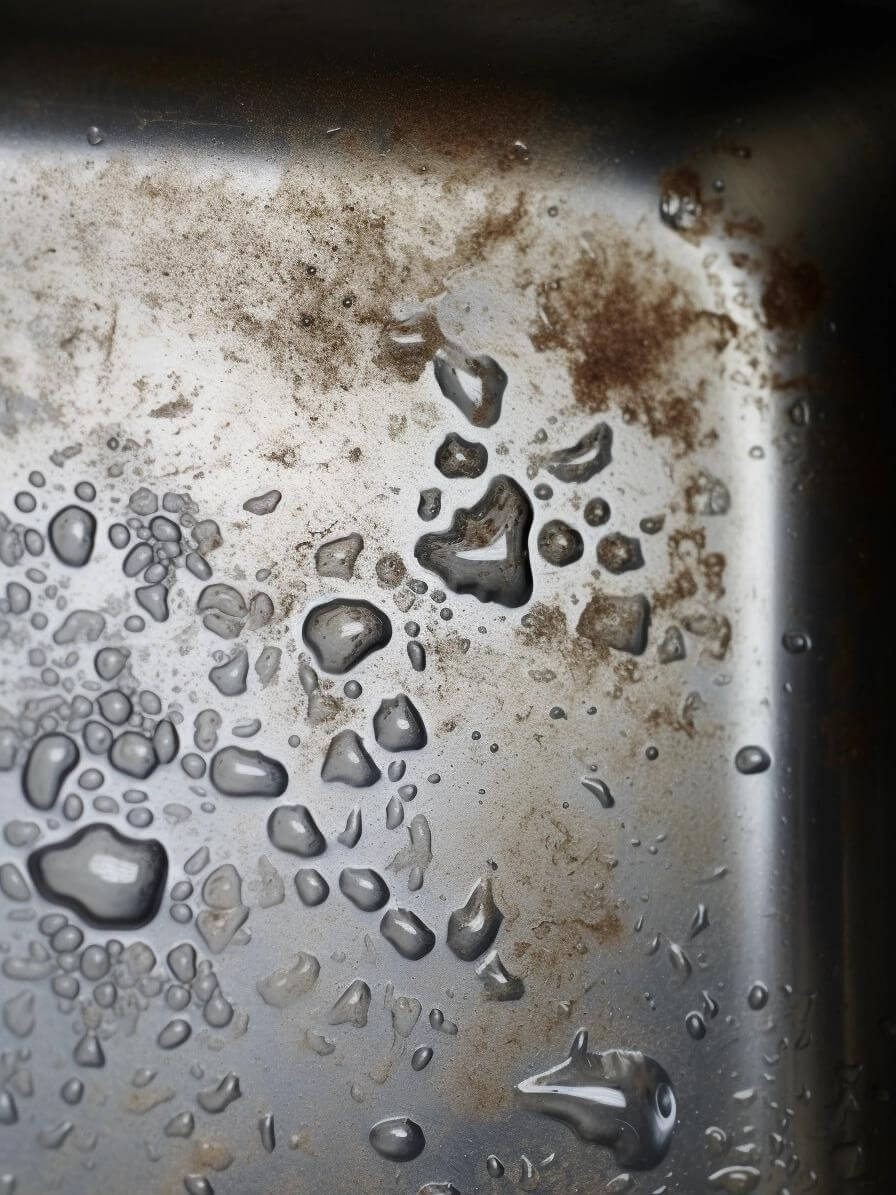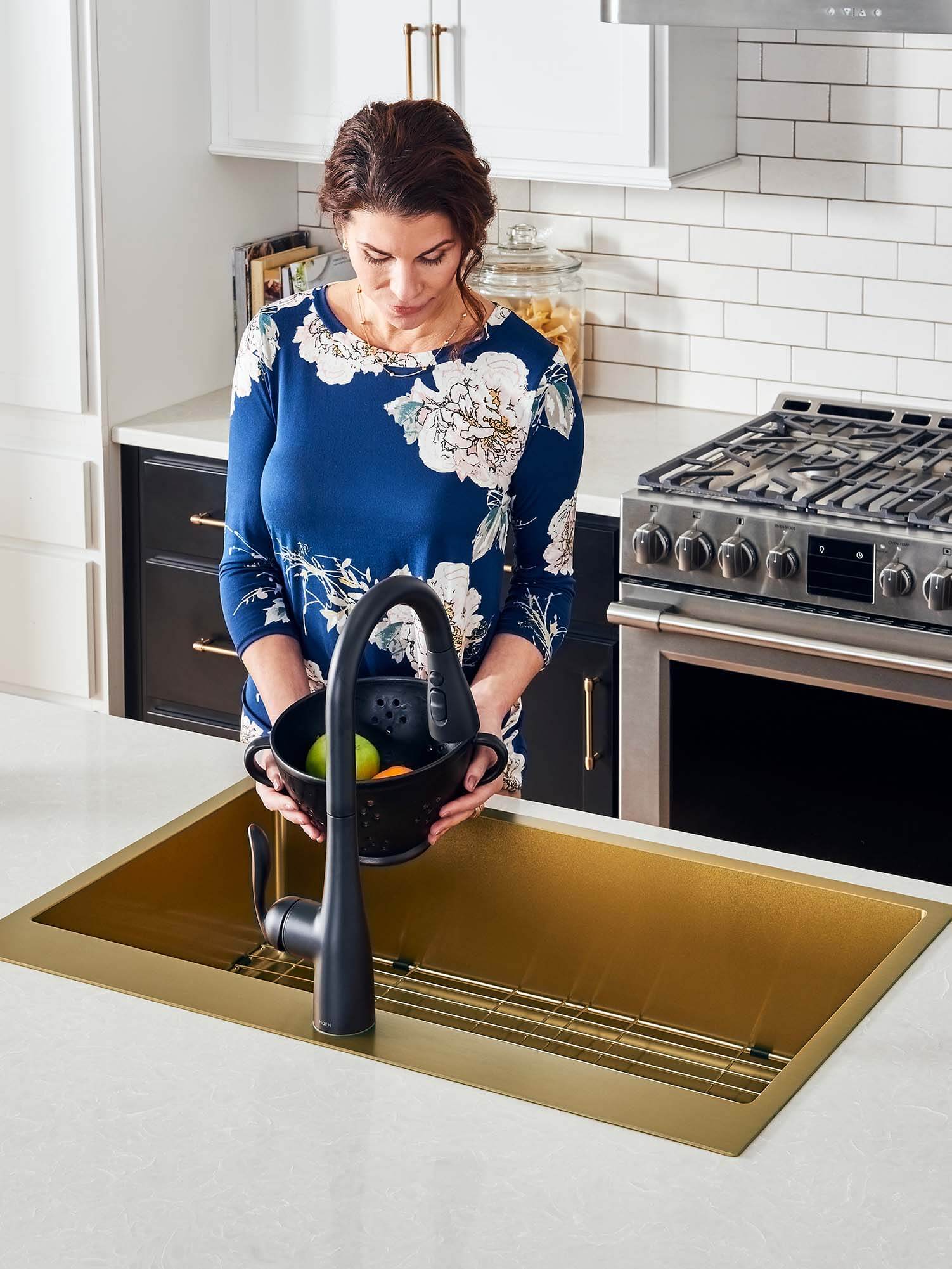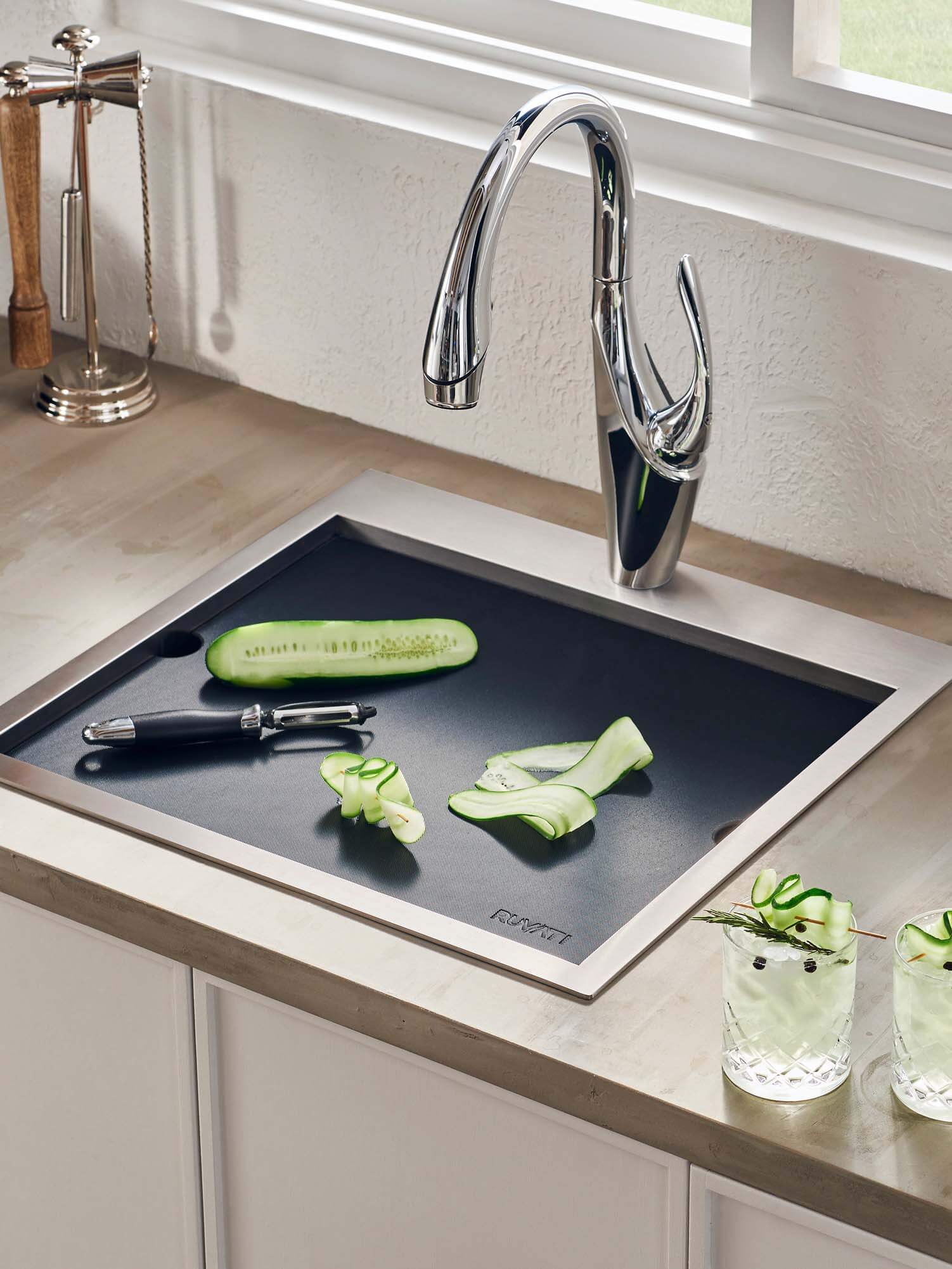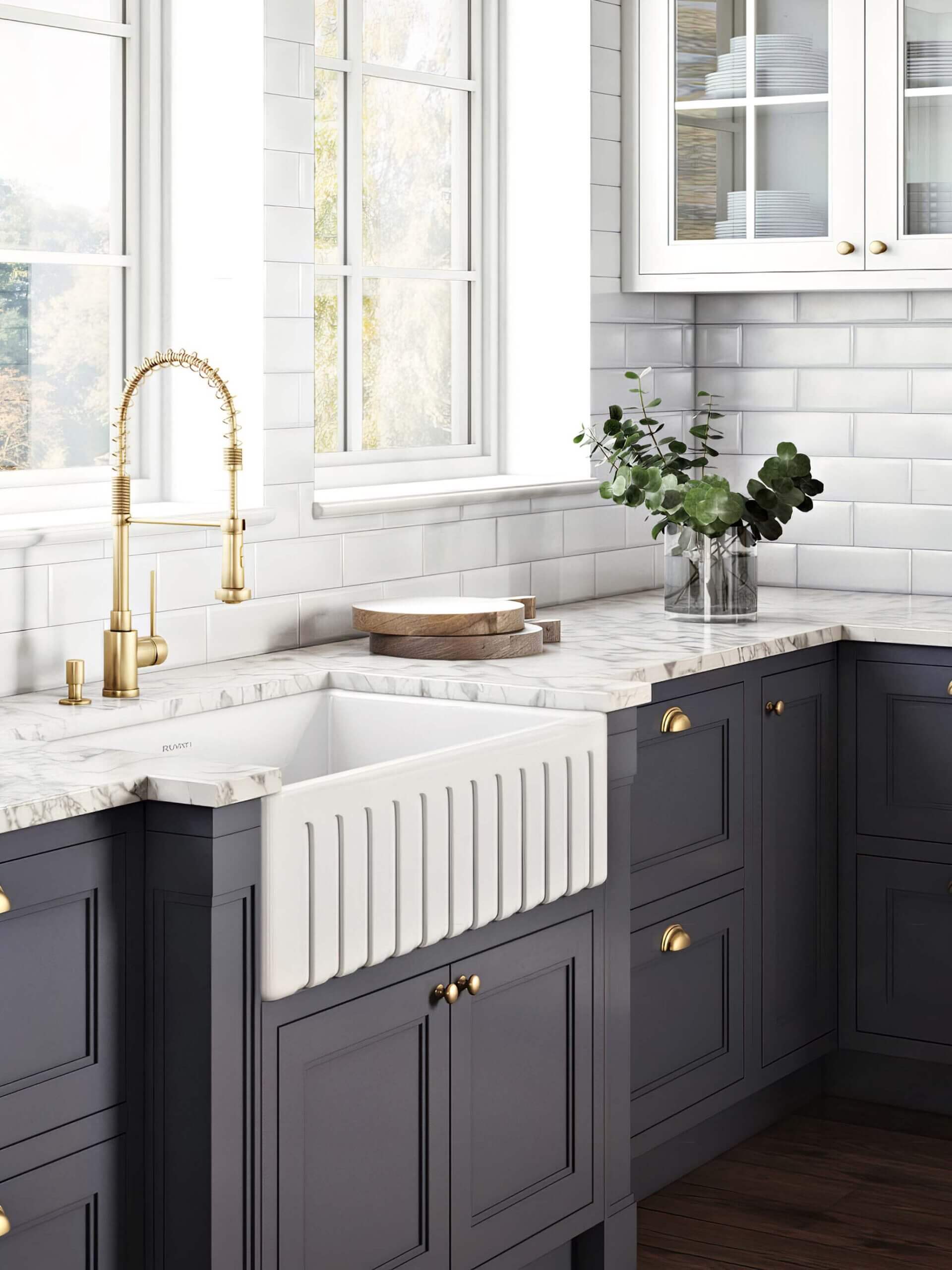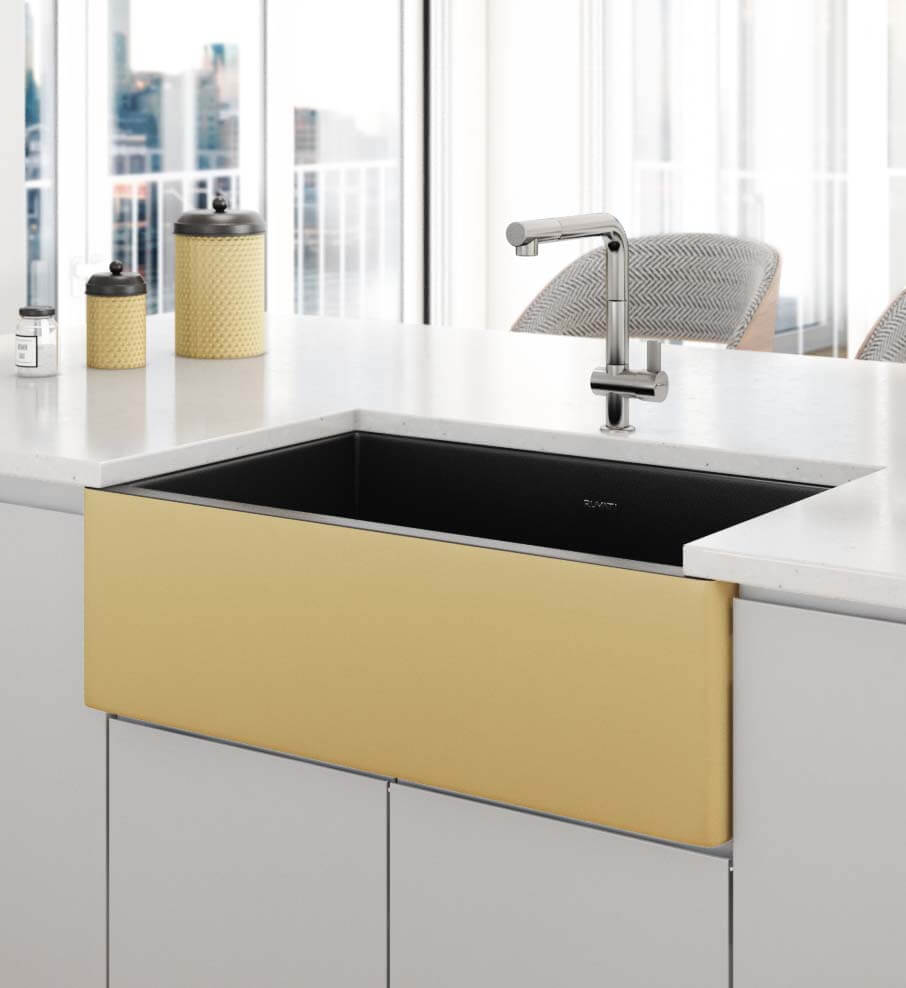Spotting rust stains on your stunning stainless steel sink can sour your spirits. After all, Ruvati Sinks are constructed of T-304 grade stainless steel with an 18/10 chromium/nickel composition, so what does it give? No, it doesn’t mean you’ve failed to properly take care of your sink. Even the most meticulously maintained stainless steel can develop rust spots. The key is understanding how to handle this common kitchen predicament. Most of the time, it’s not your sink that causes rust, but what goes in it. Don’t fret; we’ll share proven methods to restore your sink’s shine and provide preventative measures to keep rust at bay.
Why Did Your Stainless Steel Sink Rust to Begin With?
You might be wondering why it started rusting in the first place, given its reputation for resistance against corrosion. Generally speaking, The answer lies in the chromium content of stainless steel. This element forms a protective layer on your sink’s surface, preventing rust from setting in. However, if this layer is damaged or worn away, rust can occur. Your sink’s protective chromium layer can be compromised through regular wear and tear, aggressive cleaning methods, or exposure to certain substances. When you leave wet sponges or metal utensils in your sink for prolonged periods or use harsh cleaning agents, you inadvertently encourage rust formation. Cast iron cookware is the biggest culprit of them all.
Furthermore, if the water in your area has a high chlorine or chloride content, this, too, can contribute to the rusting of your stainless steel sink. Iron particles can deposit on the surface of your sink, and over time, these can rust, giving the appearance that your sink itself is rusting. Understanding these factors is the first step toward preventing corrosion on your stainless steel sink. Regularly cleaning your sink using non-abrasive cleaners, promptly removing items that can cause rust, and ensuring your sink is dry after use can all help maintain the protective chromium layer.
Understanding Rust Causes: Insights from the Field
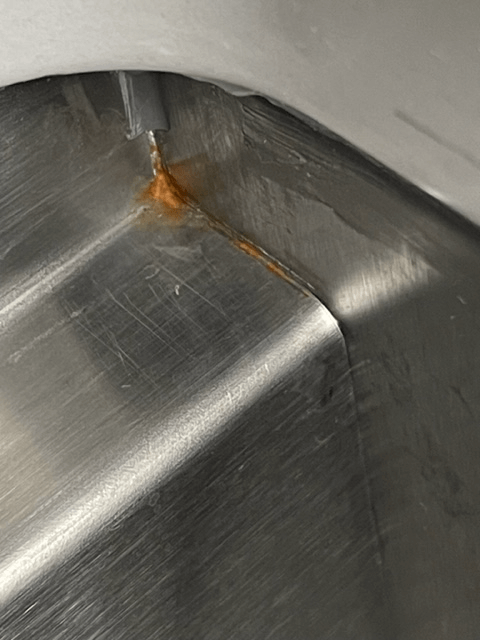
In recent data collected addressing rust complaints, it was revealed that more than 90% of rust in sinks stems from external sources.
- New Construction: Rust appearing within days of a new sink installation is often attributed to rust particles from the construction site. These particles tend to accumulate in corners and edges, resulting in rust spots. Additionally, heavy rust particle dust that lands on the sink surface and isn’t promptly cleaned off can manifest as spots all over the surface. Ensuring the sink is covered properly during renovations is crucial to prevent metal particles from falling into your sink.
- Rust After Months of Use: Rust developing after prolonged use is typically caused by rust contaminants from cast iron pots and pans or iron contaminants in well water. This can result in rust appearing in corners and edges, generalized rust spots on the surface, or rust stains shaped like pans that were sitting at the bottom of the sink.
In both scenarios, the rust stain can be effectively removed by thoroughly scrubbing with Barkeeper’s Friend and a Maroon Pad. It’s essential to scrub in the direction of the grain to prevent further damage to the sink’s surface. Additionally, there was a rarity of rust or staining caused by damage to the stainless steel itself. However, we found that this was attributed to exposure to harsh cleaning chemicals. In such cases, again, thorough rinsing and scrubbing with Barkeeper’s Friend and a Maroon Pad are recommended to remove the outer damaged layer.
In the rare occurrence of pitting, which can happen if rust particles and stains are left on the sink for an extended period. While pitting is cosmetic and may not be entirely removable, regular care can prevent further deterioration. By understanding these insights, homeowners can effectively address rust issues in their stainless steel sinks and implement preventative measures to maintain their sink’s luster and longevity.
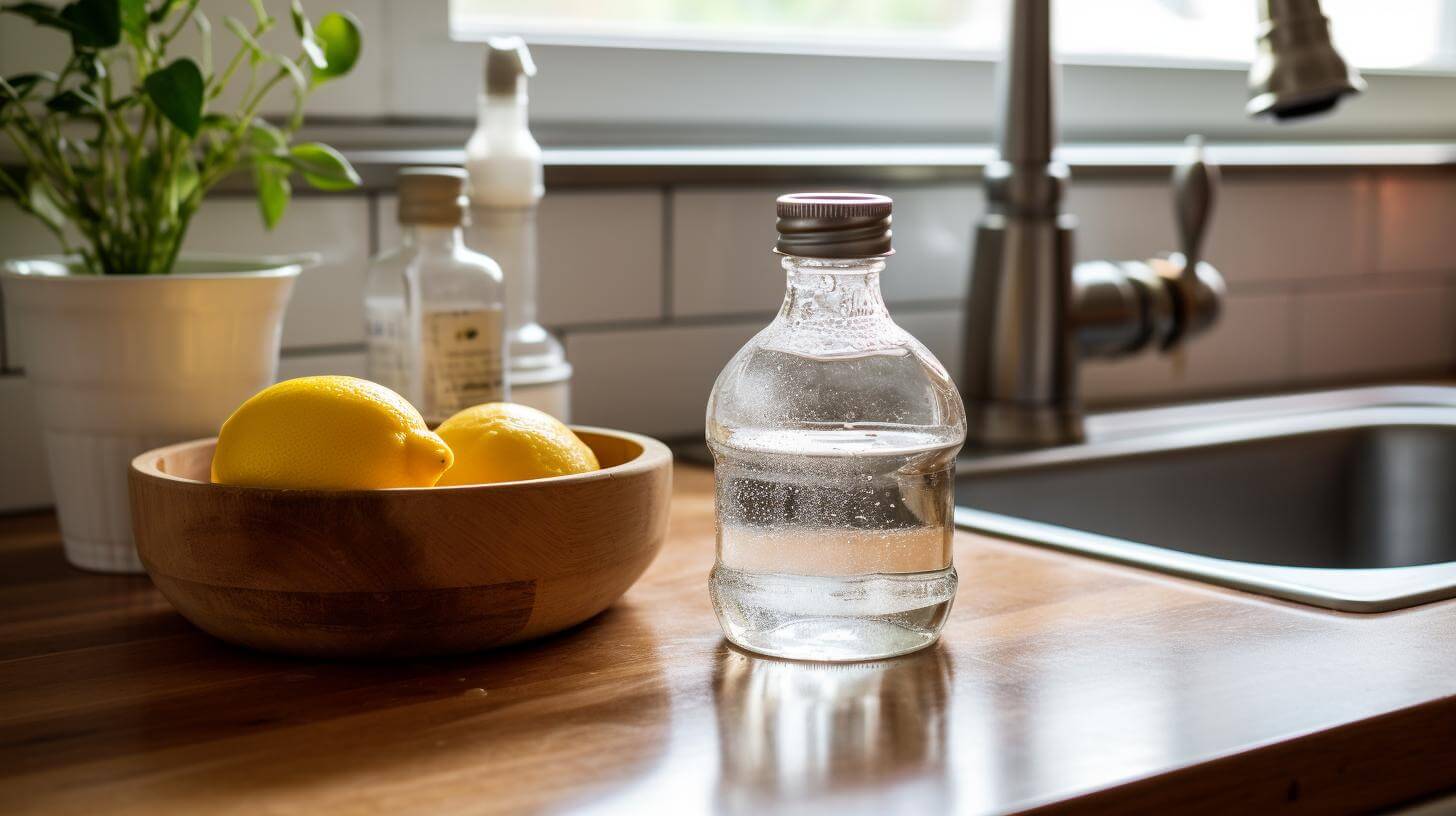
Try: Clean with Homemade Rust Removers
When tackling rust on your stainless steel sink, homemade rust removers can offer a practical and budget-friendly solution. One such method involves using the power of vinegar, lemon juice, or baking soda, all of which are non-toxic and readily available. Start by soaking the rust-affected area in distilled white vinegar or lemon juice for a minimum of 30 minutes. The acetic acid in vinegar or lemon juice will help dissolve the rust, readying it for removal. Following the soak, gently scrub the area with a soft bristle brush. Be careful not to scratch the protective layer of your stainless steel. Avoid using an abrasive pad or harsh chemicals to remove corrosion. The use of steel wool or bleach in an attempt to make your sink shiny again will do more damage than good.
Next up is making a paste out of baking soda and water. The baking soda, while mild, is abrasive enough to scrub away the loosened rust without damaging the stainless steel surface. Start by applying a tablespoon of the paste to the rust stain. Be sure to spread it liberally and add more if needed. Let sit for at least 30 minutes, and then scrub the area with a non-abrasive sponge or cloth. The baking soda paste is a natural rust remover, effective in breaking down the rust particles for easy removal. After you’ve scrubbed the sink thoroughly, rinse it with warm water and dry it completely with a soft cloth. This process will help to remove rust from stainless steel sinks effectively while preserving the integrity of the surface.

Try Again: Remove Rust with a Cleaner That Contains Oxalic Acid
For an effective method of corrosion removal from your stainless steel sink, consider using a cleaner that contains oxalic acid (H2Ox). It sounds dangerous. However, it typically has a Ph of 1 to 4, whereas water has a Ph of 7. One such cleaner that contains it is the renowned Bar Keepers Friend. This powerful cleaner is known for its ability to eliminate stubborn rust, restoring your sink to its original shine. Start by ensuring your sink is completely dry. You will want to use the original powder format of Bar Keepers Friend for this approach. Then, liberally sprinkle the cleaner across the rusted area. Providing a generous coating is essential to ensure all rust is addressed. After the cleaner is applied, let it sit for a few minutes. This allows the formula containing H2Ox to penetrate the rust and begin breaking it down.
After allowing the cleaner to sit, it’s time to scrub. Use a non-abrasive scrubbing pad to work the cleaner into the rust, always following the grain of the steel to avoid scratching. If the rust is stubborn, consider upgrading to a medium-grade or heavy-duty pad. But remember, always be gentle to avoid damaging your sink’s surface. Rinse the sink thoroughly once the rust has been worked free. It’s essential to remove all traces of the cleaner, as leftover H2Ox residue can damage stainless steel over time. After rinsing, dry the sink thoroughly, then apply a stainless steel cleaner and polish to seal and protect the surface.
Prevention: Rinse and Dry Regularly
How can you ensure the longevity of your stainless steel fixtures? Regular cleaning, rinsing, and drying can significantly help maintain their luster and prevent rust formation. This simple yet crucial step is often overlooked, but it plays a paramount role in the upkeep of your stainless steel sinks. You must rinse and dry regularly. Every time you use the sink, make sure to rinse off any residue thoroughly. This prevents hard water buildup that could corrode the stainless steel surface. It’s essential to understand that while stainless steel is rust-resistant, it’s not entirely impervious. Therefore, a thorough rinse is a must.
But rinsing alone isn’t enough. Drying your sink regularly is just as important. Water spots are not just unsightly; they can also contribute to rusting. When left to sit, these water spots can start a chemical reaction, leading to rust. You can effectively prevent this by taking a minute to dry your sink after rinsing. Equally, ensuring no wet sponges, rags, or utensils are left in the sink for prolonged periods is vital. These can trap water against the stainless steel surface, creating a perfect environment for rust formation.
Conclusion
So, there you have it! Now you know why your stainless steel sink might rust and how to tackle it. Whether you opt for homemade solutions or cleaners with oxalic acid, remember the prevention key – regular rinsing and drying. Don’t let rust steal your sink’s shine. With these techniques and tips, you can maintain your sink’s luster and keep it looking as good as new. Innovative solutions, such as applying a rust-resistant coating or investing in higher-grade stainless steel with a more outstanding chromium content, such as those provided by Ruvati, can also be explored. Preventative maintenance is critical to keeping your stainless steel sink rust-free and looking its best. Happy cleaning!

